How DeFi is Driving The Spike in Ethereum's Gas Price
The amount of fees being spent on Ethereum has reached an all-time high. What is driving this gas price spike, and what part do arbitrage bots have to play?
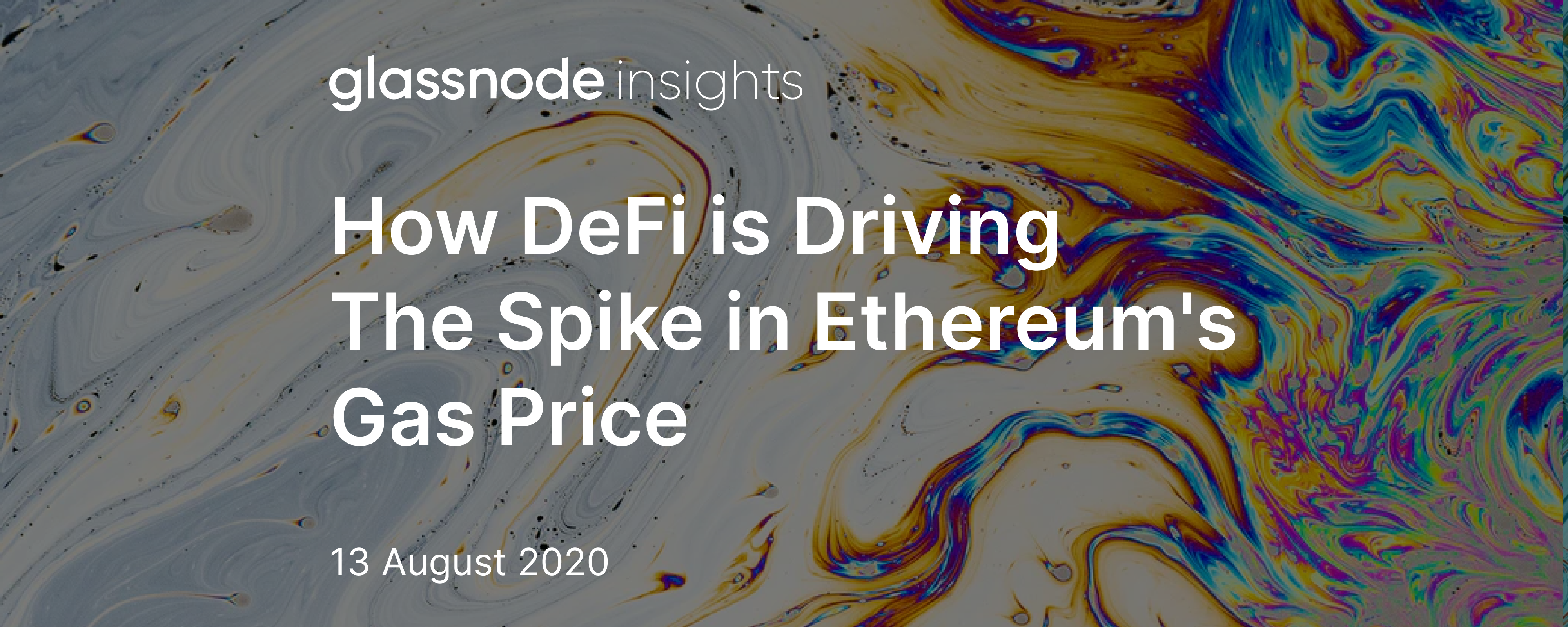
The amount of fees being spent on the Ethereum network is higher than ever before (now even higher than the single day in June with anomalous fees unrelated to regular network usage).
Over 17,500 ETH (USD$6.8 million) are currently being spent on fees daily on Ethereum.
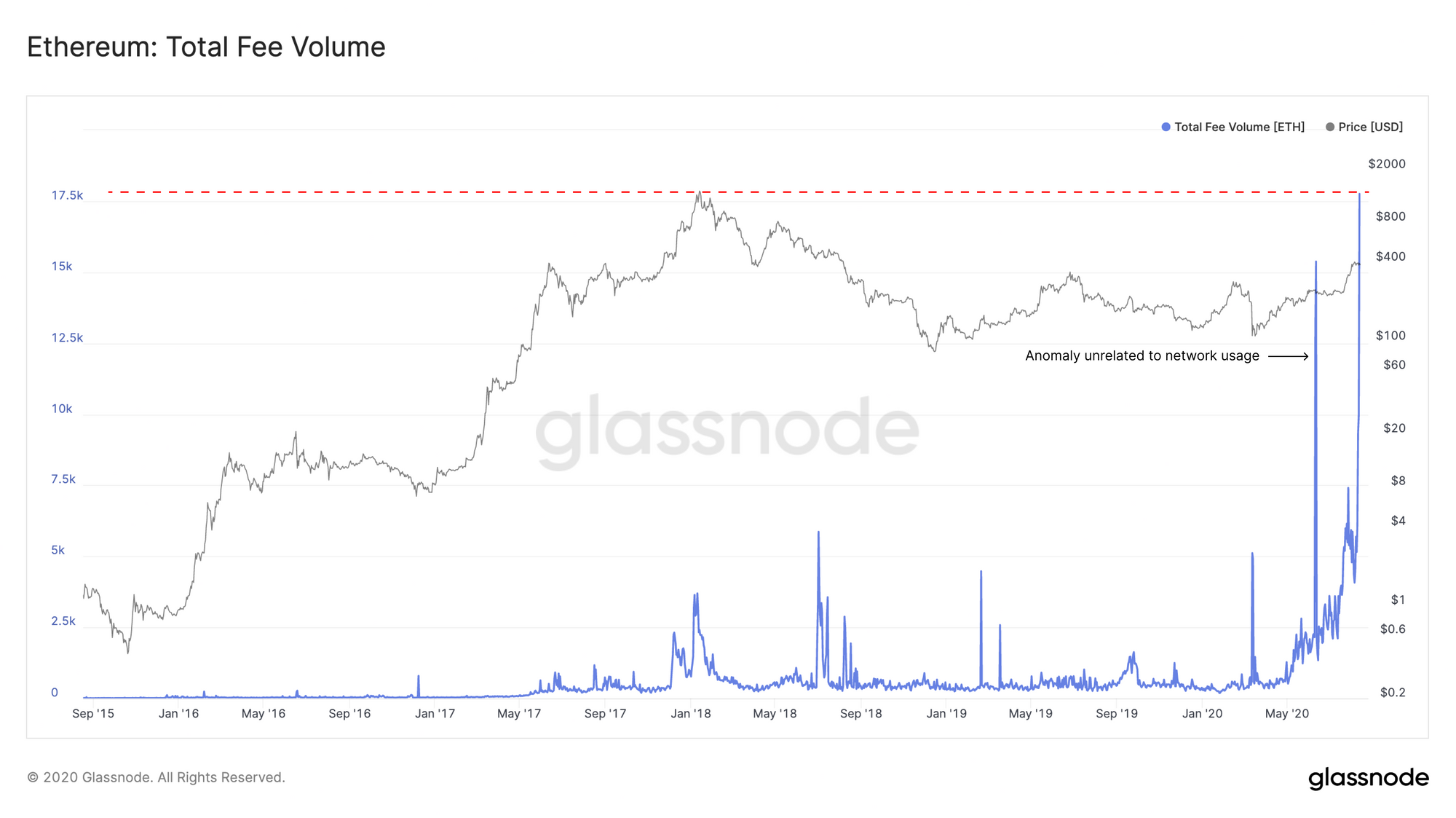
This spike in fees has been caused by a high demand for space on-chain, with the median gas price reaching an all-time high of 217 Gwei. The mean gas price is even higher, at 224 Gwei.
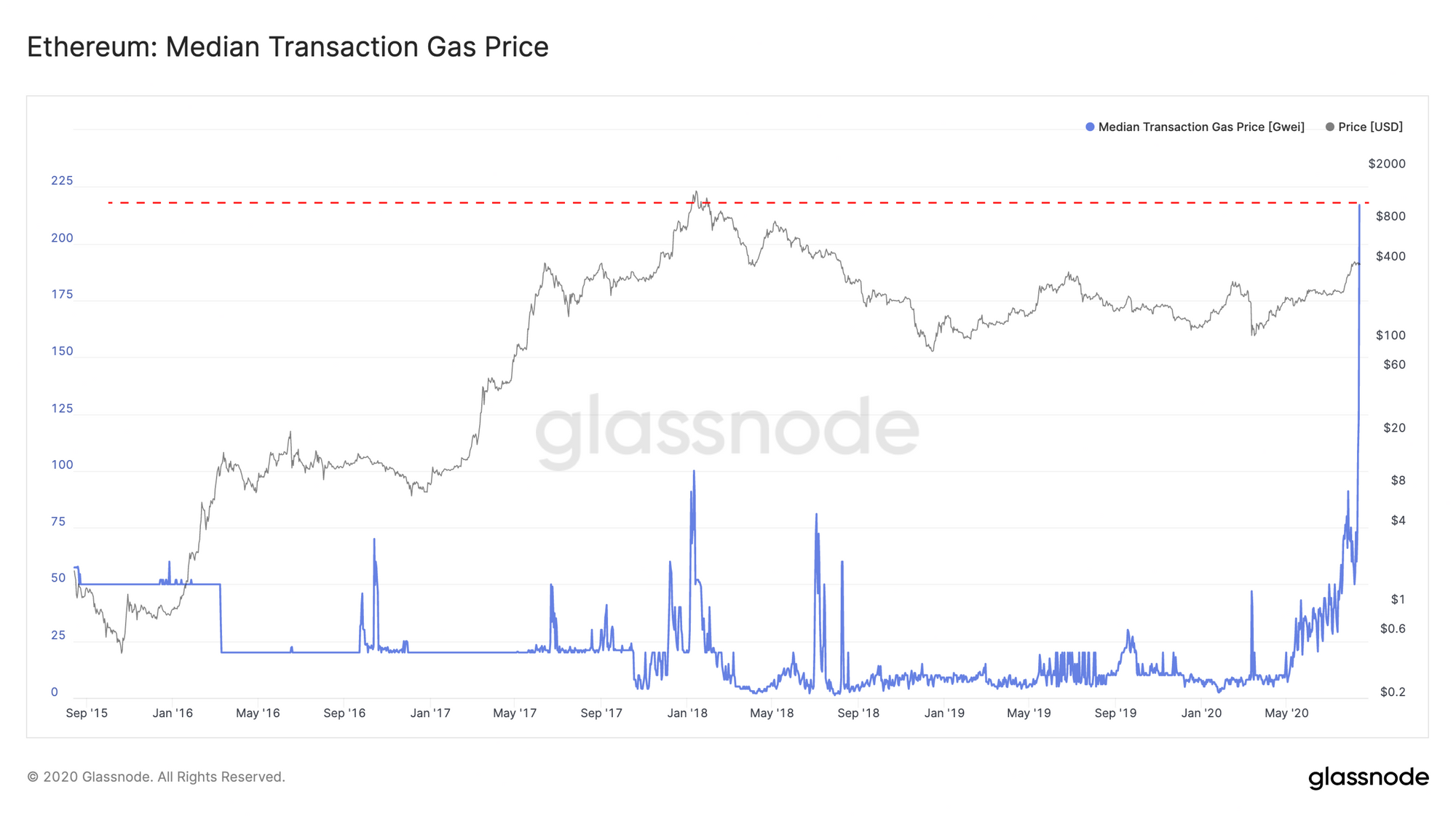
However, in order to use the network effectively, users will need to pay far more than the median gas spent. Etherscan is currently recommending an average gas price of over 350 Gwei for a 20 second wait time.
So why are fees so high? Simply put, fees are skyrocketing due to massive demand for transactions on Ethereum. It's alt season, and users are scrambling to allocate capital into the tokens and protocols that they expect to generate the most yield. But where is this demand coming from?
Stablecoins (especially USDT)
The growing dominance of USDT is a large factor in taking up network space, with transfers of this token accounting for 14% of all fees spent in August so far. USDT is clearly dominating the stablecoin market on Ethereum, with other stablecoins only accounting for 1.2% of fees spent.
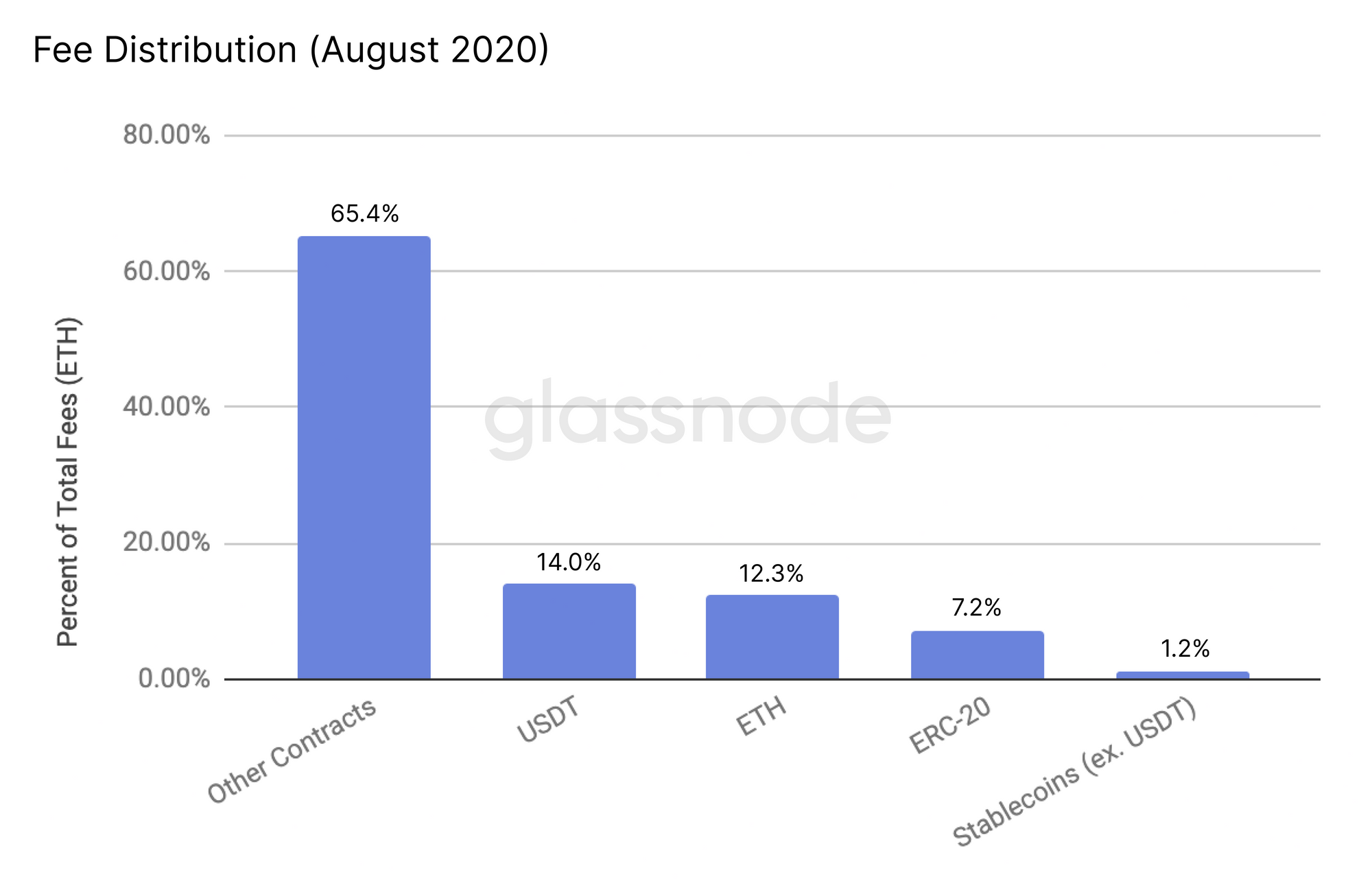
However, this is dwarfed by the "other contracts" category (which looks at fees spent on transactions other than for ETH, ERC-20, and stablecoin transfers), which accounts for over 65% of all gas spent this month.
"Other Contracts"
If we break down this "other contracts" category further, we start to see some interesting patterns.
DeFi and DEXs
With all the hype in the DeFi space right now, DeFi applications (specifically decentralized exchanges, or DEXs) are taking up the majority of the gas fees used by the "other contracts" category. Many of these protocols are not just transferring tokens between addresses, but instead are using more gas-intensive smart contracts to perform actions such as staking, pooling, and lending.
Among DeFi applications, DEXs are by far the most popular, and are a huge contributor to Ethereum's gas price spike: for example, Uniswap is responsible for 39% of fees spent by the top 20 contracts this month, with several other DEX contracts also in the top 20.

Arbitrage Bots: Unwelcome Gas Guzzlers
When looking at the contracts in the top 20 chart above, we found something interesting - many of these contracts are not associated with known projects or entities. Their owners offer no source code or identifying features, but they mostly display the same patterns which imply that they are arbitrage bots (although this has not been 100% confirmed).
These contracts, most of which apply very similar trading patterns, are rapidly buying and selling tokens - mostly between Uniswap and Balancer.
This constant activity across multiple platforms (while also likely paying higher gas prices for front-running) is extremely fee-intensive; of the top 20 contracts this month, arbitrage bots make up for almost 20% of fees.
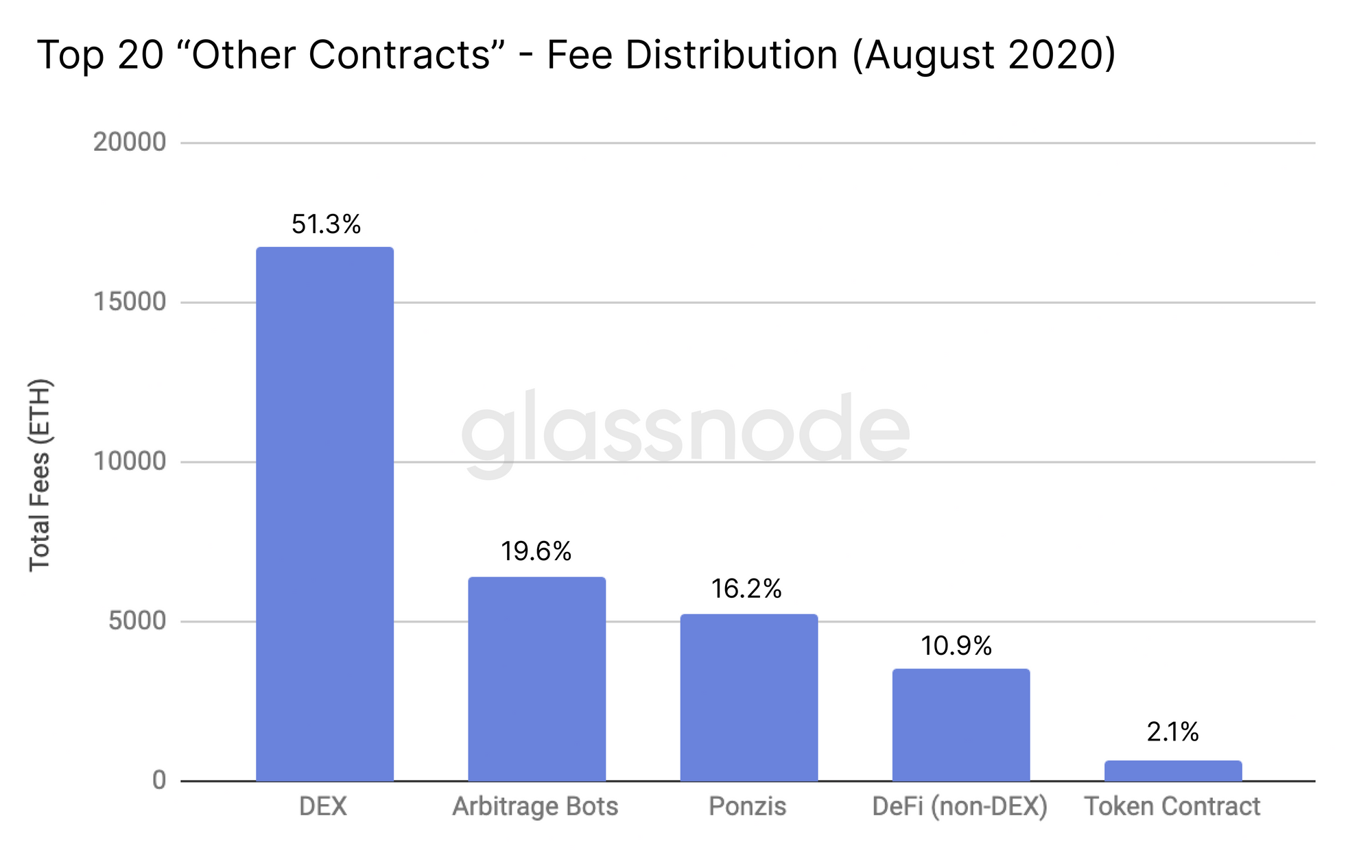
These suspected arbitrage bots in the top 20 have spent around USD$2.5 million worth of ETH on gas this month alone. Meanwhile, opportunists are also using stablecoin arbitrage to make huge profits, while consuming huge amounts of gas.
Take out 405k loan.
— Ceteris Paribus (@ceterispar1bus) August 10, 2020
Use 45k + 405k loan to swap 450k usdc for 492k usdt.
Pay back 405k loan.
Profit 42k - 2k transaction fee.
Nice start to the week. https://t.co/IMljUaVJPH pic.twitter.com/MibHFiJF6y
The fact that arbitrage is profitable enough to justify this immense spend demonstrates just how much money there is to be made by cleverly playing the landscape of DeFi products and protocols.
Ponzi Schemes
The next highest gas fee payer is ponzi schemes, the most prolific of which take the place of the 2nd and 19th most gas-intensive contracts in August so far (Forsage.io and Lionsshare.io respectively). Both schemes employ the same mechanism and have been widely reported as ponzi schemes, with warnings to avoid them.
When we wrote about Ethereum fees 2 months ago, Forsage.io was already the second-highest contract in terms of fees paid in 2020. At the time, however, it had contributed towards less than 3000 ETH in fees in the first 6 months of 2020. Now, it has contributed to nearly 5000 ETH in fees in the first 2 weeks of August alone, illustrating the sheer extent to which gas prices have increased.
Conclusions
DeFi, with all its complex mechanics, is taking up a significant portion of gas on Ethereum. Between decentralized exchanges, arbitrage bots, and other DeFi protocols, the ecosystem is responsible for a large portion of the unprecedented increase in gas prices that we are currently seeing.
However, the increased network demand (and therefore congestion) is coming from a number of places - both inside and outside of the DeFi ecosystem:
- DEXs - Organic demand for buying and selling on decentralized exchanges means that this type of transfer is taking up a significant amount of Ethereum's network capacity.
- Arbitrage bots - The DeFi mechanics which lead to significant spread across different exchanges mean the market is ripe for these kind of opportunists.
- USDT transfers - With increased trading comes an increased demand for a stable asset through which to realize gains.
- Regular ETH transfers - Account-to-account transfers of ETH are also taking up a significant amount of gas as investors trade the base asset of the Ethereum blockchain.
Overall, the cause of Ethereum network congestion and high gas prices is simple: the anticipation of a bull market has created massive demand in all niches - large and small, familiar and arcane, dated and nascent.
Bonus: ERC-20 Transfers
While ERC-20 token transfers account for only 7.2% of fees paid this month (see Figure 3 above), an analysis of which tokens are taking up the majority of these fees is still interesting.
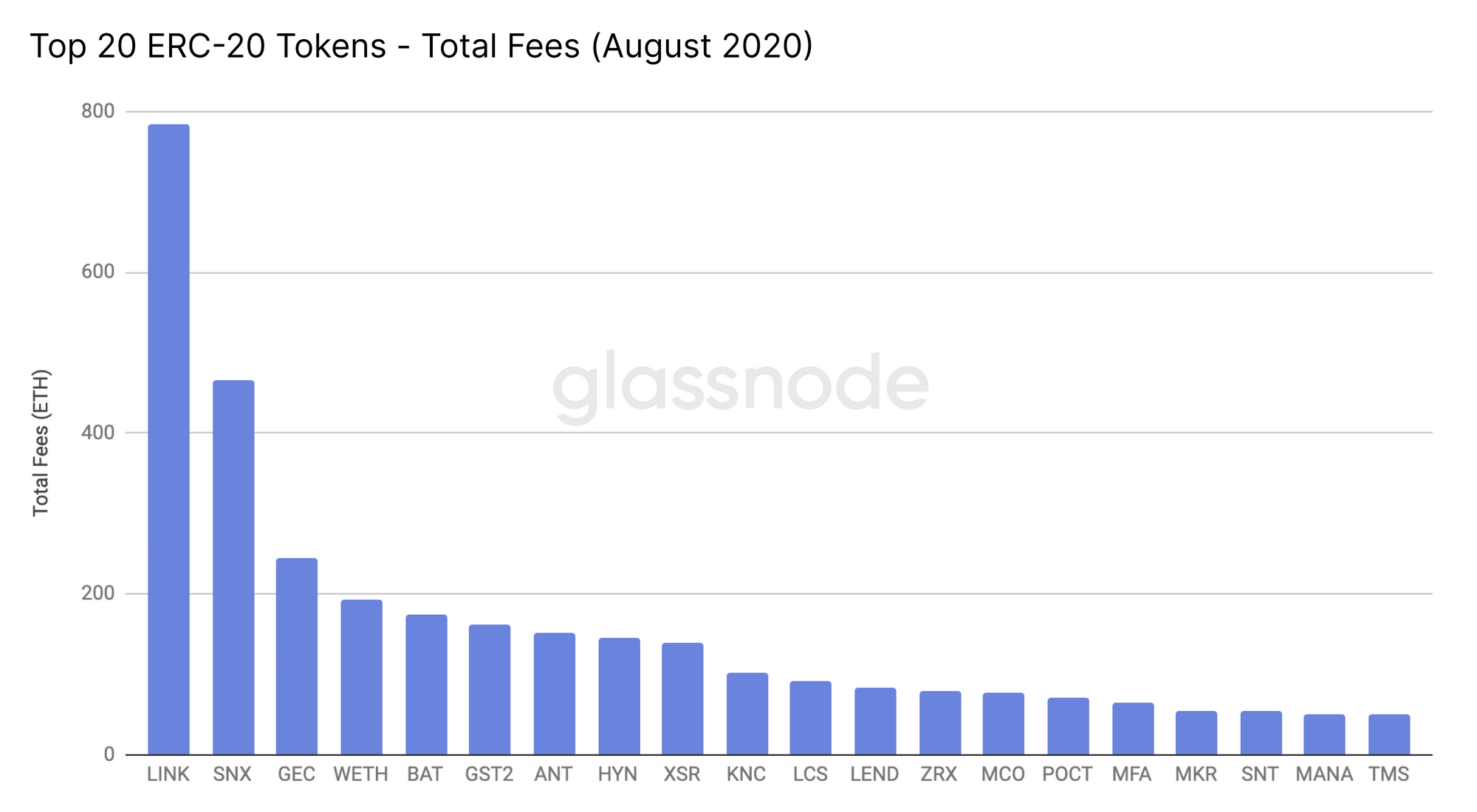
The ever-popular and rapidly growing Chainlink (LINK) token is by far the most popular, with almost 800 ETH spent in transfer fees so far in August. Synthetix (SNX) comes in at second place, well behind LINK, but well ahead of the next token, the Green China Ecosystem (GEC), which mysteriously appears to have no online presence.
Once again, just like with the arbitrage bots, mysterious players seem to be making a large impact on the Ethereum network while remaining in obscurity.
Special thanks to Rick Klomp for helping with the data used in this analysis.
Live metrics on Glassnode Studio:

- Follow us and reach out on Twitter
- Join our Telegram channel
- For on–chain metrics and activity graphs, visit Glassnode Studio
- For automated alerts on core on–chain metrics and activity on exchanges, visit our Glassnode Alerts Twitter
